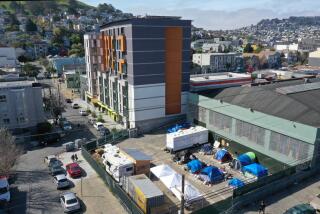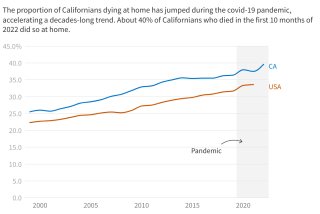At-home defibrillators: Proceed with caution
- Share via
The recent government approval of an at-home defibrillator could reasonably be expected to save lives. After all, 61 million Americans have heart disease and most cardiac arrests happen at home.
But the device, which shocks a heart back into normal rhythm, might do more harm than good, some experts say.
For the record:
12:00 a.m. Nov. 21, 2002 For The Record
Los Angeles Times Thursday November 21, 2002 Home Edition Main News Part A Page 2 National Desk 9 inches; 347 words Type of Material: Correction
At-home defibrillators -- A story in Monday’s Health section on at-home defibrillators said that Dr. Vinay Nadkarni, chairman of the emergency cardiovascular care committee of the American Heart Assn. in Dallas, recommended contacting the Red Cross for training in the use of defibrillators. Although Nadkarni recommended training, he did not recommend a specific organization. People who want training, however, may get it through the American Red Cross or the American Heart Assn.’s Heartsaver CPR course.
For The Record
Los Angeles Times Monday November 25, 2002 Home Edition Health Part F Page 8 Features Desk 2 inches; 88 words Type of Material: Correction
At-home defibrillators -- A story in last Monday’s Health section on at-home defibrillators said that Dr. Vinay Nadkarni, chairman of the emergency cardiovascular care committee of the American Heart Assn. in Dallas, recommended contacting the Red Cross for training in the use of defibrillators. Although Nadkarni recommended training, he did not recommend a specific organization. People who want training, however, may get it through the American Red Cross or the American Heart Assn.’s Heartsaver CPR course.
“It hasn’t been demonstrated that untrained family members can use them effectively,” said Dr. Vinay Nadkarni, chairman of the emergency cardiovascular care committee of the American Heart Assn. in Dallas. And distracted family members may wait too long before calling the paramedics.
“People may think just having the machine at home is enough,” said Nadkarni, and might not call 911 immediately. Each year, 250,000 people die of sudden cardiac arrest. Unlike a heart attack, which cuts off blood flow to the muscle, cardiac arrest is triggered by an erratic heartbeat that stops the heart from pumping. The only thing that can restore the heart’s natural rhythm is a jolt of electricity, known as defibrillation.
The window for successful resuscitation is 10 to 12 minutes, and for every minute of delay, chances of survival drop by 10%. Since it can take six minutes or more for paramedics to respond to 911 calls, an external defibrillator can provide treatment before they arrive.
There’s been a widespread drive to place these life-saving devices not only in ambulances, firetrucks and police cars, but in airports, planes, stadiums, health clubs, shopping malls and schools. But 70% of cardiac arrests occur at home, which is why the devices have been adapted for home use. The Food and Drug Administration earlier this month approved the first such device, Philips Electronics’ HeartStart Home Defibrillator, which will be available with a prescription.
Twenty years ago, only physicians used defibrillators, but advances in technology have made it possible for someone with no medical expertise to use them. Unlike older devices, which required a doctor to determine heart rhythm, the new models are programmed to detect irregularities. “That’s the key change that makes it possible to use them at home,” said Dr. L. Bing Liem, an electrophysiologist at Stanford University School of Medicine in Palo Alto.
Last month, a New England Journal of Medicine study of defibrillator use at three Chicago airports found that untrained people can indeed save lives.
HeartStart, which was tested for ease of use by a group of sixth-graders, walks people through the resuscitation process. Once users pull back the handle, they are given step-by-step voice instructions, accompanied by written directions on where to place the paddles. “If you need extra help, it will pause with you and provide coaching comments,” said David M. Freeman, a vice president with Philips Electronics in Andover, Mass.
The system does weekly self-checks, and chirps like a smoke detector if the battery runs down. Users can’t zap someone accidentally--the device is programmed to detect rhythms and will only jolt hearts that need it.
Although sudden cardiac arrest can strike people at any age, the most likely victims are men in their 60s, which means the defibrillator will be most often used by their wives or someone else living in their home.
But even though the device has been tested on sixth-graders, Nadkarni said, “sixth-graders are not the spouses of sick patients, and we don’t know how people will act in a true emergency situation.”
Furthermore, the $2,295 cost for the HeartStart Home Defibrillator may be prohibitive for retirees on a fixed income, since it’s unclear whether insurers or Medicare will pay for them
The National Institutes of Health is beginning a study to determine if these at-home devices increase survival rates among people at high risk of cardiac arrest. But results won’t be known for four years. In the meantime, says Nadkarni, family members who want the device should get proper training from their local Red Cross.
CVS pharmacy, a major drugstore chain in many parts of the country, is expected to stock the machines in about six weeks; in California, they can be ordered via the Internet at www.heart starthome.com.






